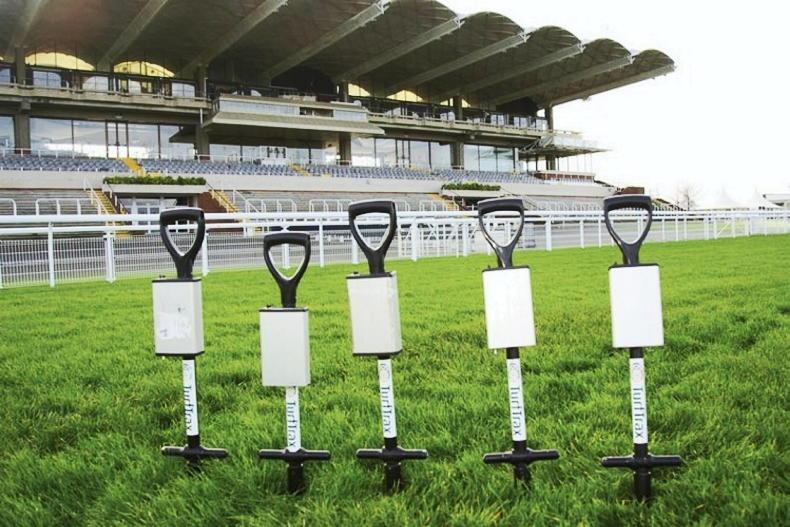IRISH-trained horses should be schooled over obstacles with white markings in order to avoid being disadvantaged when competing at the Cheltenham Festival, according to renowned horsewoman and triple Cheltenham Gold Cup-winning trainer Henrietta Knight.
Fences and hurdles in Britain have seen trimmings that were previously coloured orange changed to white since the British Horseracing Authority acted on studies by Exeter University that identified increased visibility for horses when dealing with white on obstacles.
However, fences and hurdles in Ireland remain with an orange trim, meaning Irish-trained horses are presented with a different view when tackling obstacles at meetings in Britain.
Willie Mullins suggested that Energumene’s first-fence blunder before being beaten as 4/9 favourite in the rescheduled Clarence House Chase at Cheltenham last month may have been linked to the Champion Chase winner not being used to the white style of fences, while connections of some other recent Irish-trained runners in Britain believe their chances were dented by the change in colour.
Speaking to The Irish Field, Knight said: “To start with, I was very against any changes, as were many top jockeys, who told me they felt the same. I have a big schooling field where people come to use my fences and hurdles so I felt I had to then go with the system and paint a lot of things white. I have to say that I think the horses are now jumping better.
“Horses back off more at a white obstacle. It’s brighter and catches their attention. I spoke to Nicky Henderson about it this week and he told me there is no question that horses jump better over the white-painted obstacles.
“In relation to Irish horses, I think that, as long as they go somewhere where there are white fences to get used to before Cheltenham, there will be no trouble. But the white can make them go a bit higher and become more careful, so they need to see them before they go to Cheltenham. When you’re racing somewhere like the Festival, the speed is such that you cannot waste time in the air.”
Paul Carberry, widely regarded as one of the most naturally talented jockeys of all time, is unsure whether the change of colour makes a significant difference to horses’ ability to jump safely but believes schooling over white trimmings will be a help to Irish-trained runners in Britain.
The 14-time Cheltenham Festival-winning rider said: “Some horses who wouldn’t be used to the white could get a bit of a fright. I’m not sure if where they are on the fence makes much of a difference because it doesn’t change the height of the obstacle and it’s still black on top.
“It’s going to take a bit of getting used to, but I don’t think changing the colour makes much difference. I was riding out this week in a yard that will have Cheltenham runners and I saw white on some of the fences, so trainers must have it on their minds.”
Niall Earls, director at leading hurdle-and-fence manufacturers Easyfix, is adamant that consistency in the type of obstacle used in Britain and Ireland is key to delivering the best solution for horses’ wellbeing.
Feedback to trials at Fairyhouse last week was reportedly positive in relation to a new traditional-style hurdle, which was developed by Easyfix in the aftermath of an injury to Buveur D’Air’s when the dual Champion Hurdle winner got a splinter of wood stuck in his foot at a timber hurdle in the 2019 Fighting Fifth Hurdle.
Earls told The Irish Field: “In terms of the inconsistencies with fences, I can see exactly where Willie Mullins is coming from. I wonder whether in Ireland we will adapt to be white in the future because what we have to achieve across the board is consistency.
“We looked into this ourselves with Exeter University back in March 2017 and got all the data on how horses could see white much easier than orange, which looks green to horses. We have seen an increase in the purchase of white obstacles in recent times.”




 This is a subscriber-only article
This is a subscriber-only article
 It looks like you're browsing in private mode
It looks like you're browsing in private mode











SHARING OPTIONS: